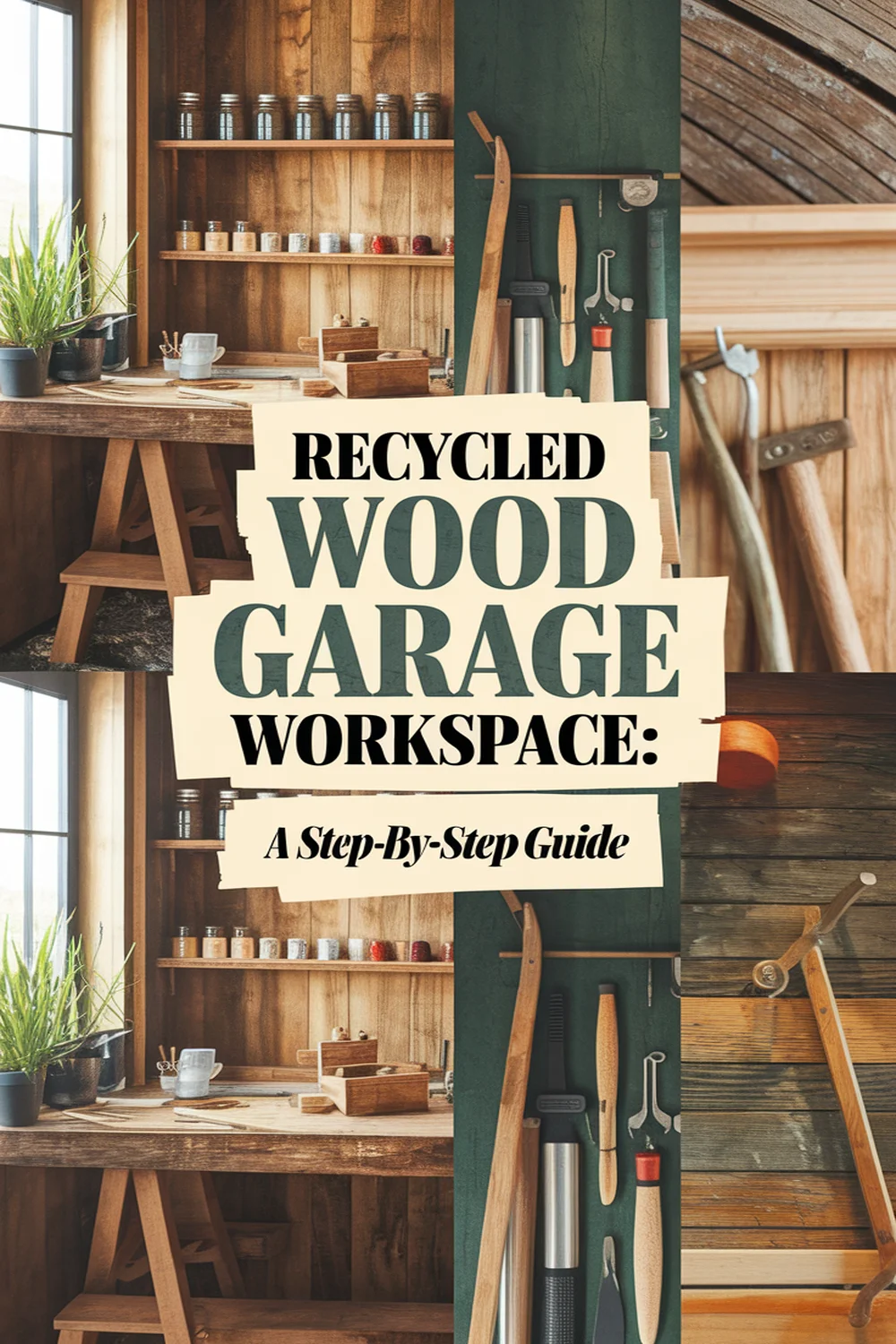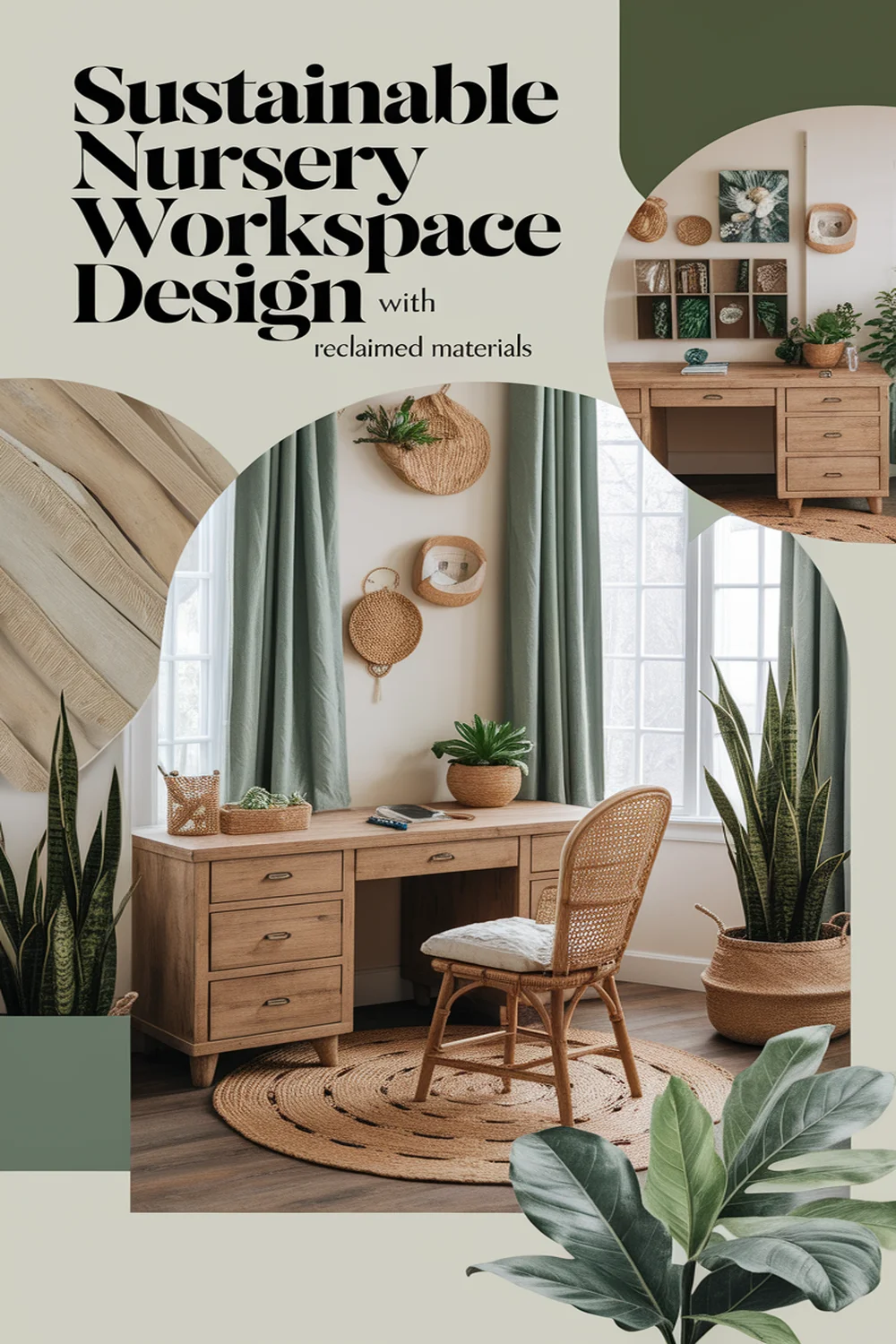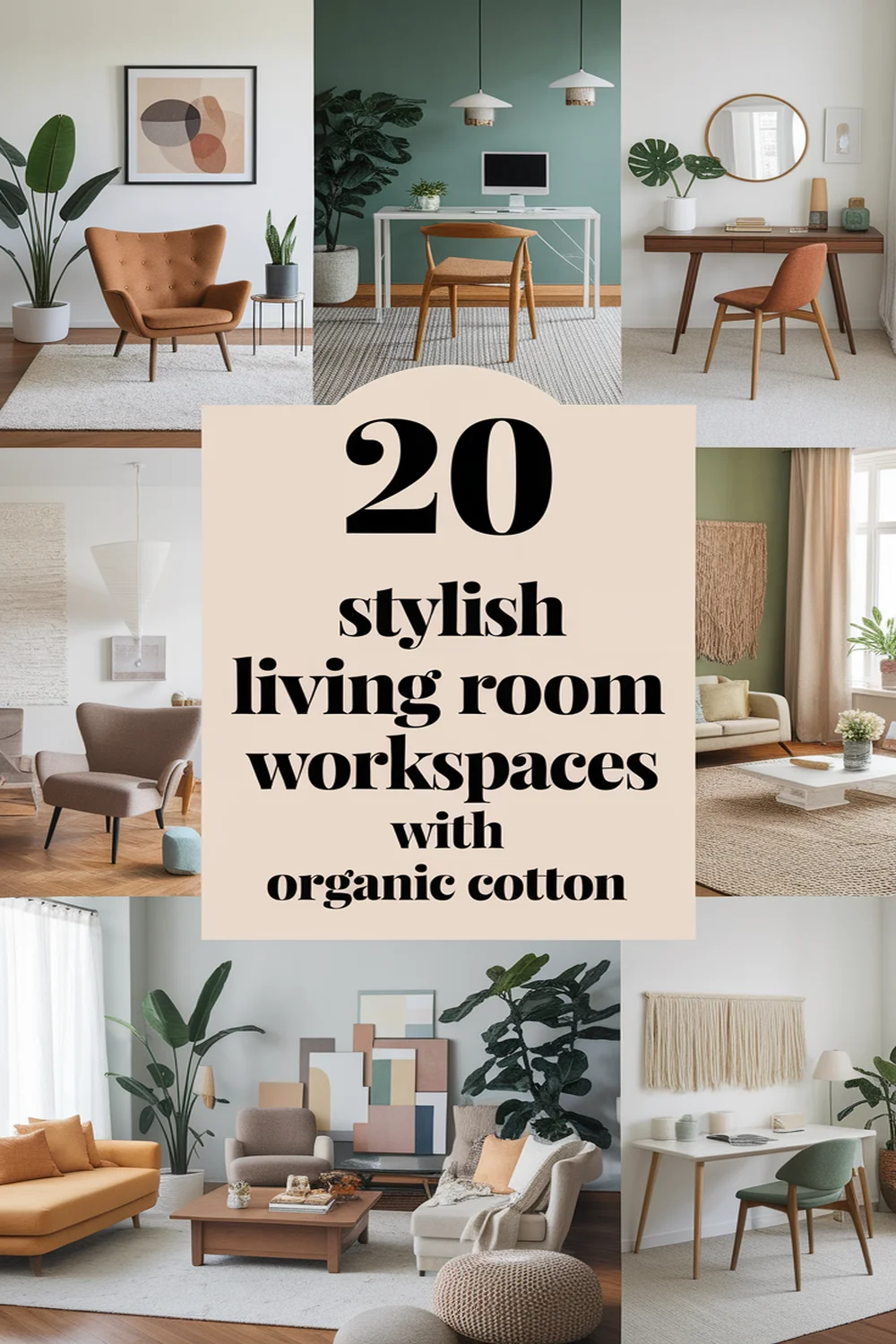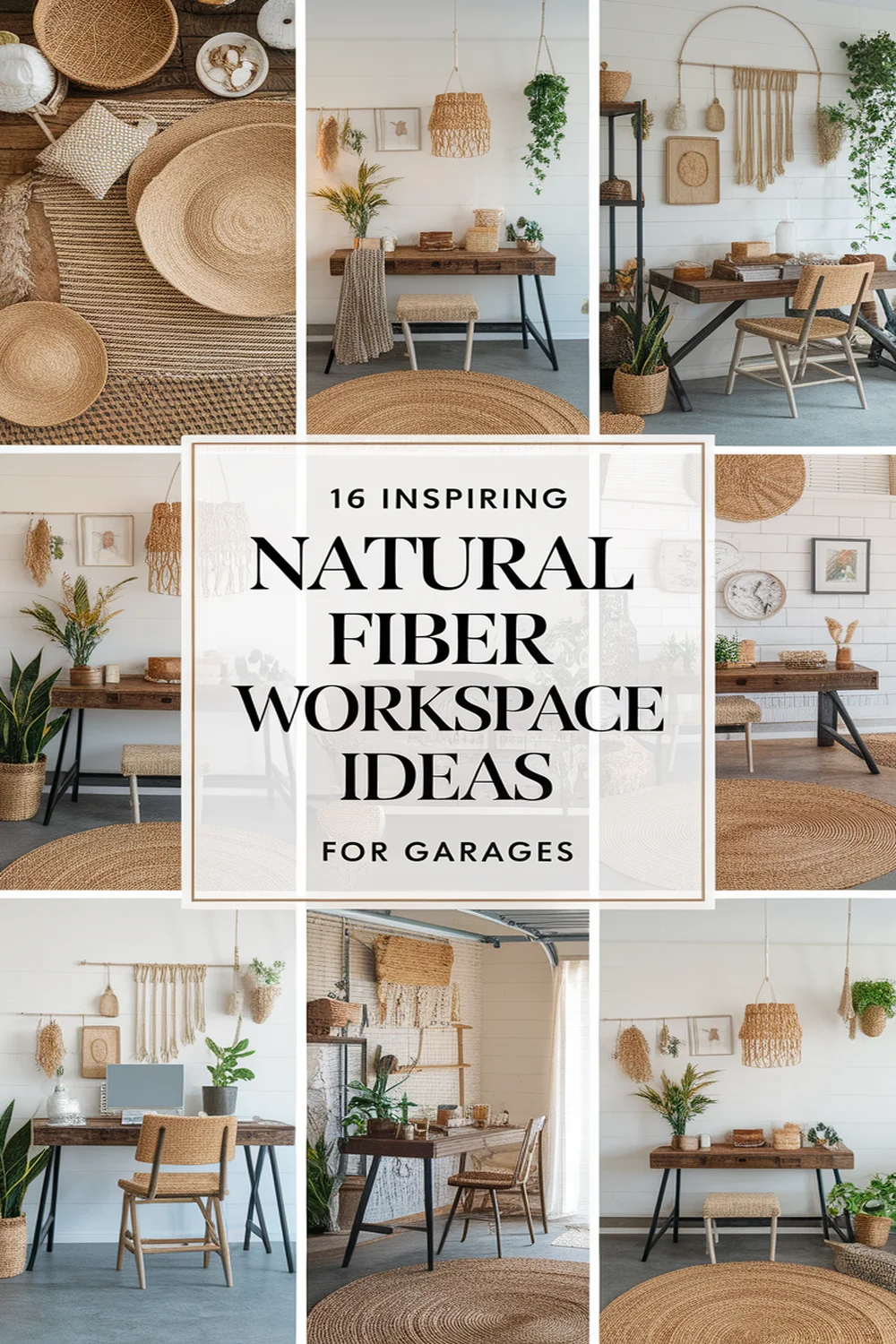This post may contain affiliate links. Please read our policy page.
Designing a garage workspace using recycled wood is an exciting way to blend sustainability with creativity. I start by evaluating my garage space and figuring out my needs. I find reclaimed wood and unique pieces at local sources, ensuring each one’s in good shape. I then design a functional layout, incorporating multi-functional furniture and vertical storage. Comfort’s also key, so I add personal touches. If you’re curious about the details, there’s more to explore.
Assessing Your Garage Space
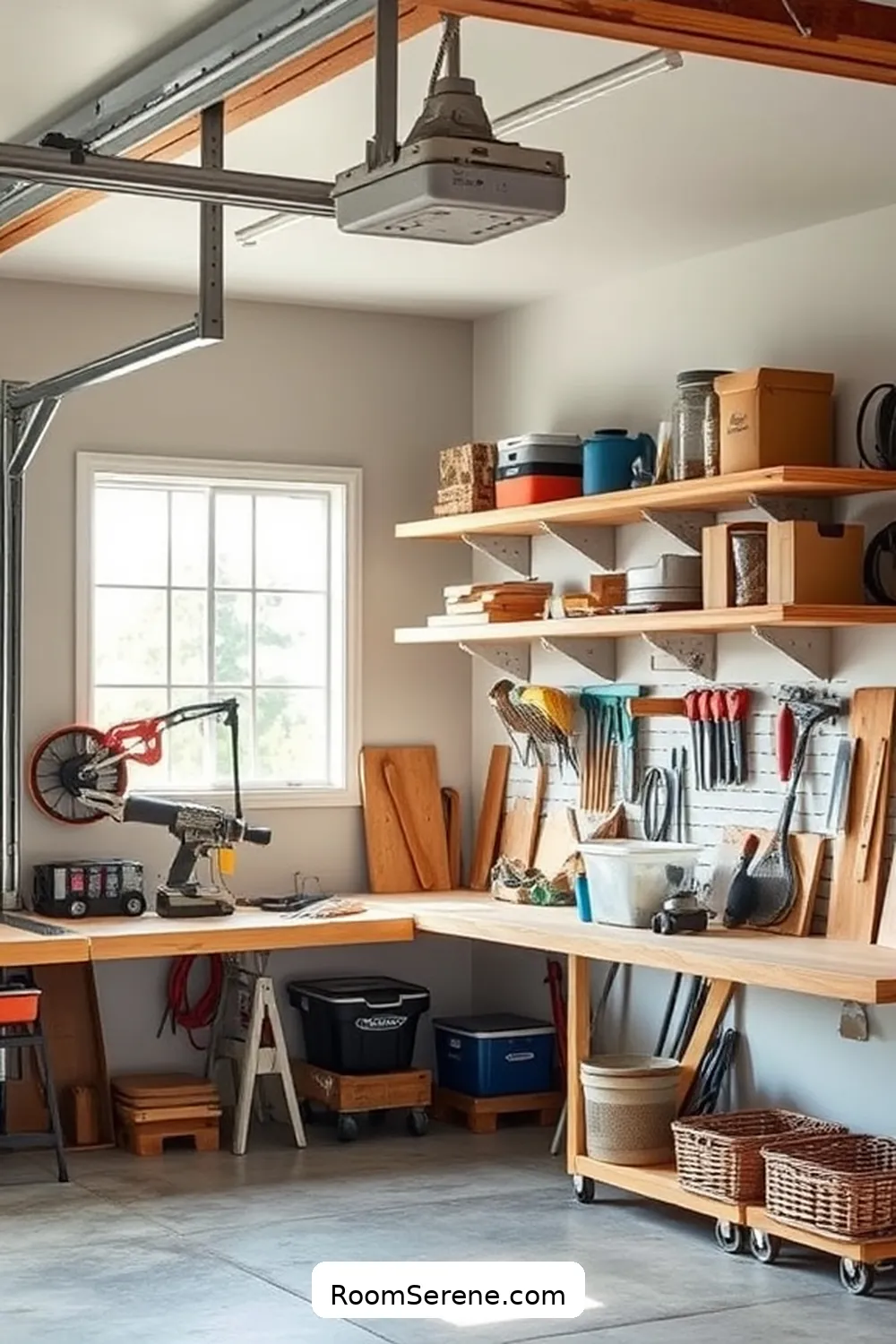
How can I make the most of my garage space while being eco-friendly?
First, I take a good look at my garage’s layout and dimensions. I measure the walls, floor, and any obstructions like windows or shelves. With this info, I can visualize how to maximize every inch.
I often repurpose items instead of buying new—old furniture can become storage solutions. I also consider vertical space; installing shelves or pegboards makes excellent use of walls.
If I find anything that doesn’t serve a purpose, I donate or recycle it.
Finally, I guarantee my workspace gets enough natural light, reducing the need for electricity.
Determining Your Workspace Needs
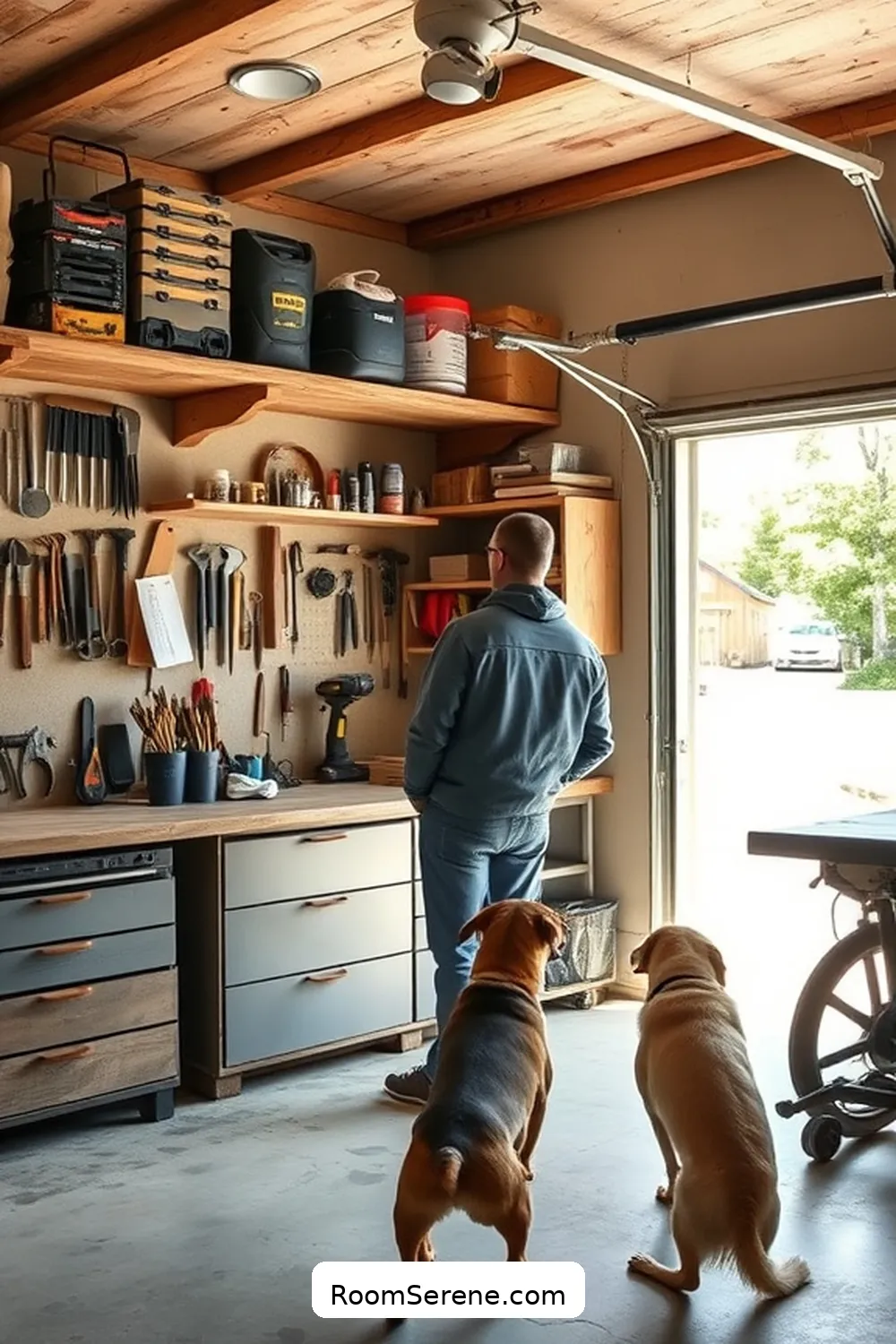
After evaluating my garage space, the next step is to determine what I actually need in my workspace. I start by making a list of the projects I plan to tackle, whether it’s woodworking, crafting, or repairs. This helps me envision the essential tools and equipment I’ll require.
I consider multi-functional furniture to save space and increase efficiency, like a workbench that doubles as storage. I also want to incorporate sustainable practices, using reclaimed materials for any upgrades.
It’s vital to create an organized layout that allows easy access to tools, so I think about shelving and pegboards made from recycled wood. Ultimately, I aim to design a workspace that reflects my eco-conscious values while meeting my creative needs.
Finding and Selecting Recycled Wood
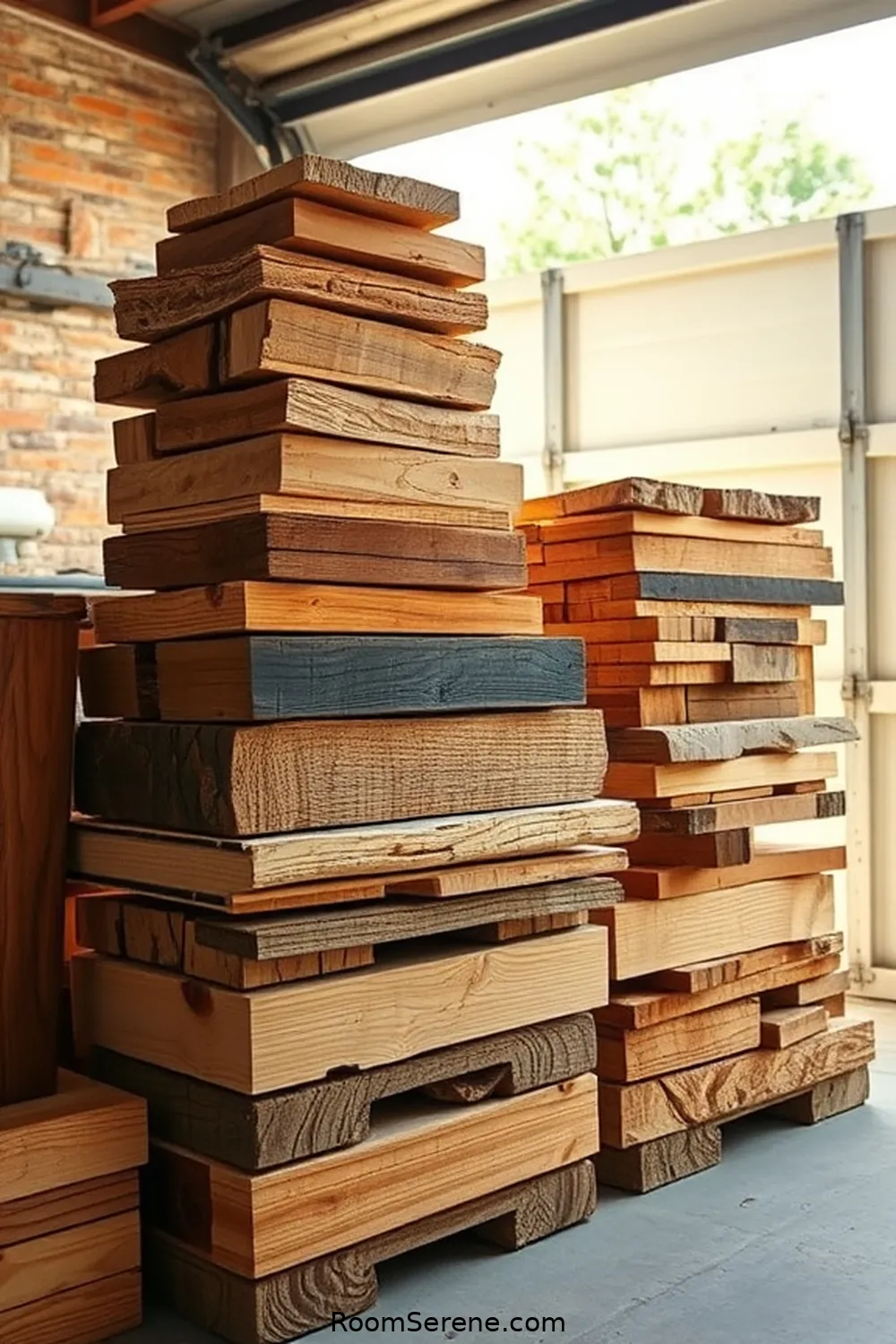
Where can I find quality recycled wood for my garage workspace?
I’ve discovered several fantastic sources that not only help the environment but also add character to my projects.
Here are a few places to check out:
- Local lumber yards: Many sell reclaimed wood or can direct you to suppliers.
- Salvage yards: These are treasure troves of unique pieces waiting for a new life.
- Online marketplaces: Websites like Craigslist or Facebook Marketplace often list reclaimed wood.
- Construction sites: Ask builders if they’ve leftover wood from projects.
- Community workshops: They sometimes offer workshops or materials for reuse.
Designing Your Workspace Layout
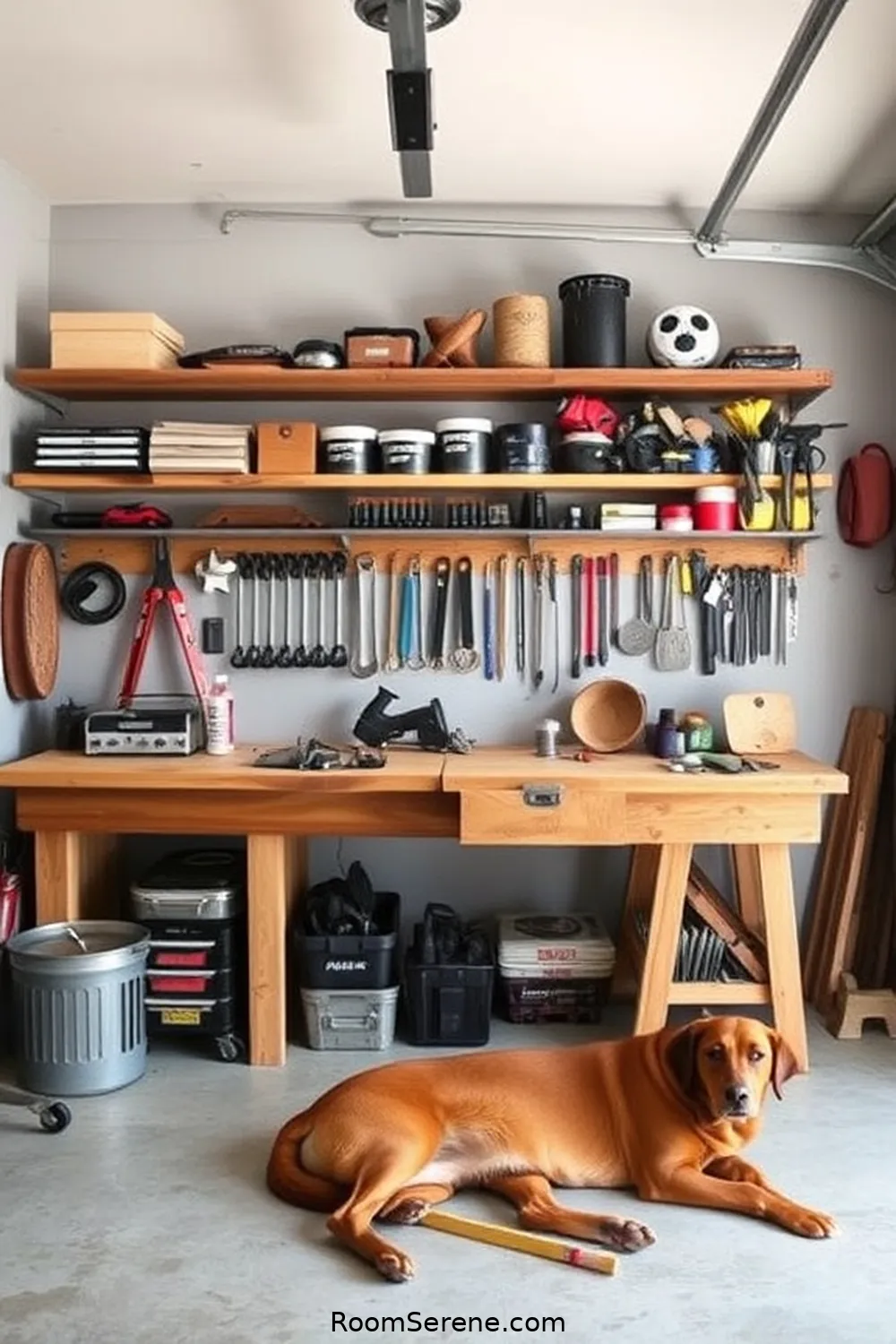
As I began designing my garage workspace, I realized that an efficient layout is essential for maximizing functionality while showcasing the unique character of recycled wood.
I started by zoning areas for different tasks, like woodworking, storage, and assembly. This way, I could create a natural flow that keeps everything accessible.
Using reclaimed wood, I built sturdy shelves and workbenches that blend seamlessly with the space. I also considered natural light, positioning my workspace near windows to enhance visibility and energy efficiency.
Essential Tools and Materials
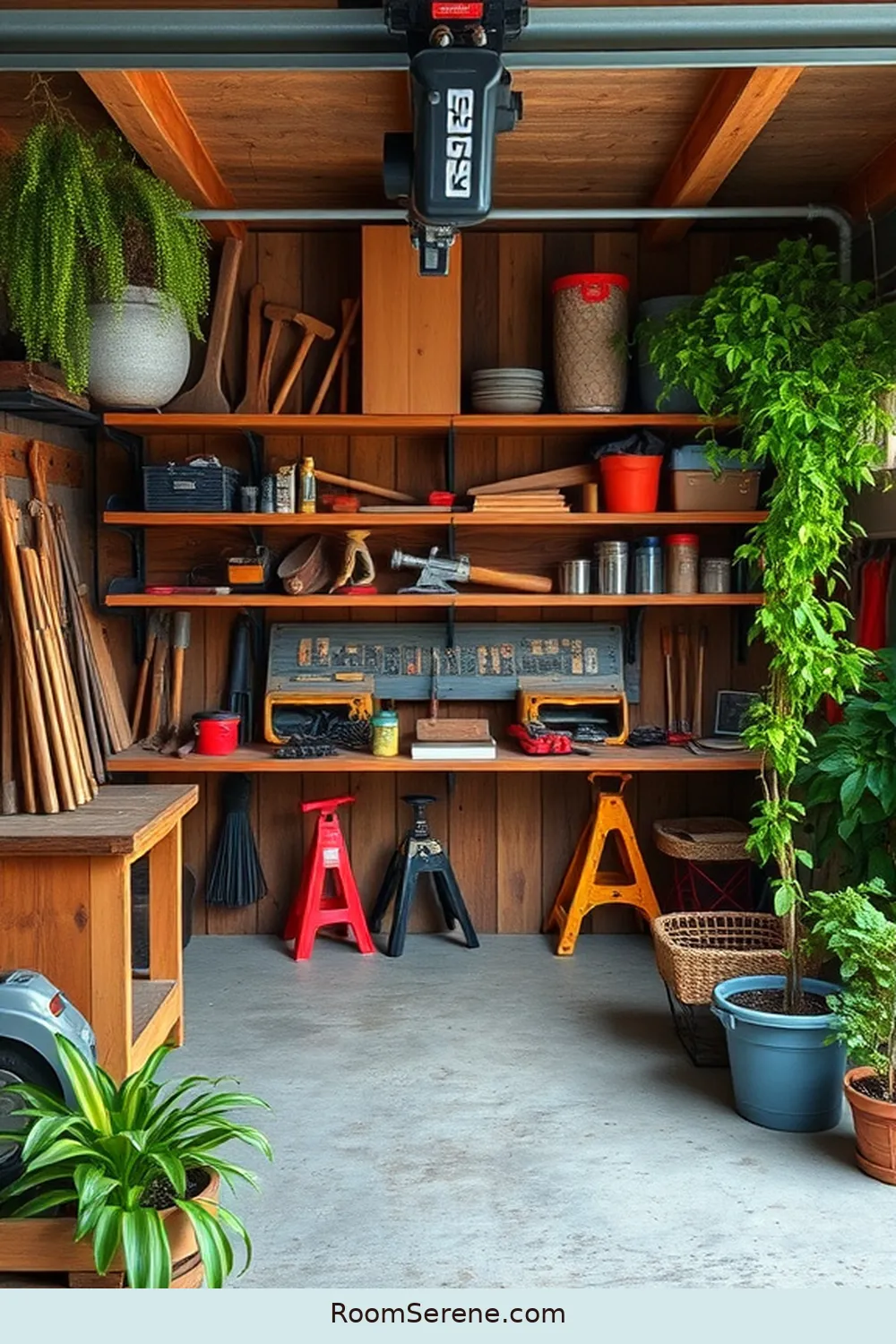
A solid collection of essential tools and materials makes all the difference in transforming your garage workspace into a productive environment.
Using recycled wood is just one part of the equation; having the right tools guarantees I can create effectively and sustainably.
Having the right tools is essential for transforming recycled wood into sustainable and effective creations.
Here’s what I consider indispensable:
- Measuring tape – Accuracy is key in any project.
- Circular saw – Perfect for cutting reclaimed wood with precision.
- Drill – Essential for making sturdy connections.
- Sandpaper – Smooths rough edges, guaranteeing a professional finish.
- Eco-friendly wood glue – Bonds pieces together while being kind to the planet.
With these tools at hand, I’m ready to turn my recycled materials into a functional and inspiring workspace.
Let’s get started!
Recommended Items
Here are our recommended products and equipment to create your dream garage workspace—feel free to explore!
Preparing the Recycled Wood
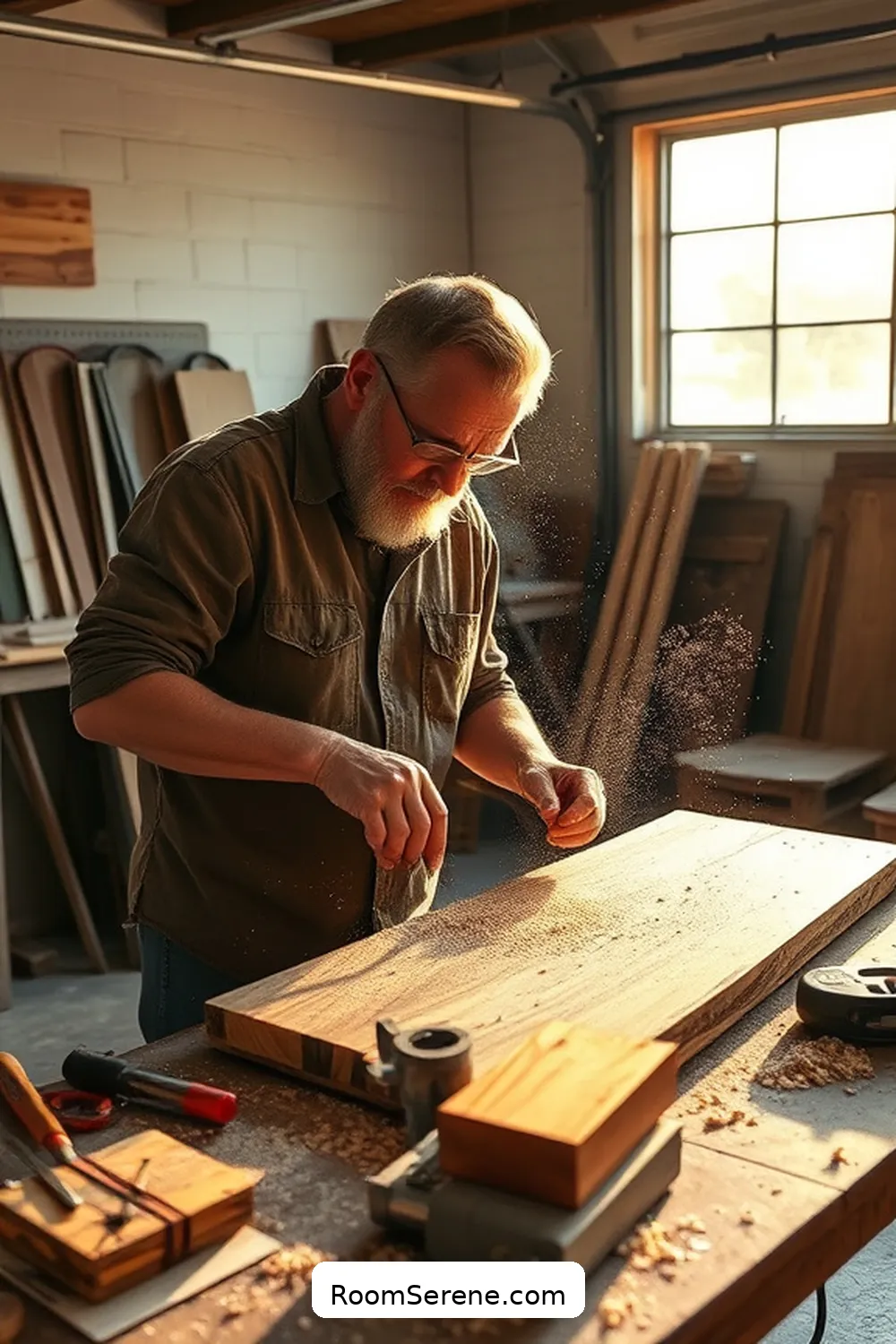
Before diving into my projects, I always make sure the recycled wood is properly prepared, because it lays the foundation for a successful build. I start by inspecting each piece for nails, screws, or damage. Then, I give them a good clean to remove dirt and old finishes. Sanding the surfaces smooth guarantees a better finish and helps prevent splinters. Finally, I treat the wood with a non-toxic sealant to protect it while preserving its natural beauty.
| Step | Action |
|---|---|
| Inspection | Check for damage & fasteners |
| Cleaning | Remove dirt & finishes |
| Sanding | Smooth surfaces |
| Sealing | Apply non-toxic sealant |
This thoughtful preparation truly enhances the sustainability of my workspace.
Task Overview for Garage Workspace Decor
Building Workbenches and Shelves
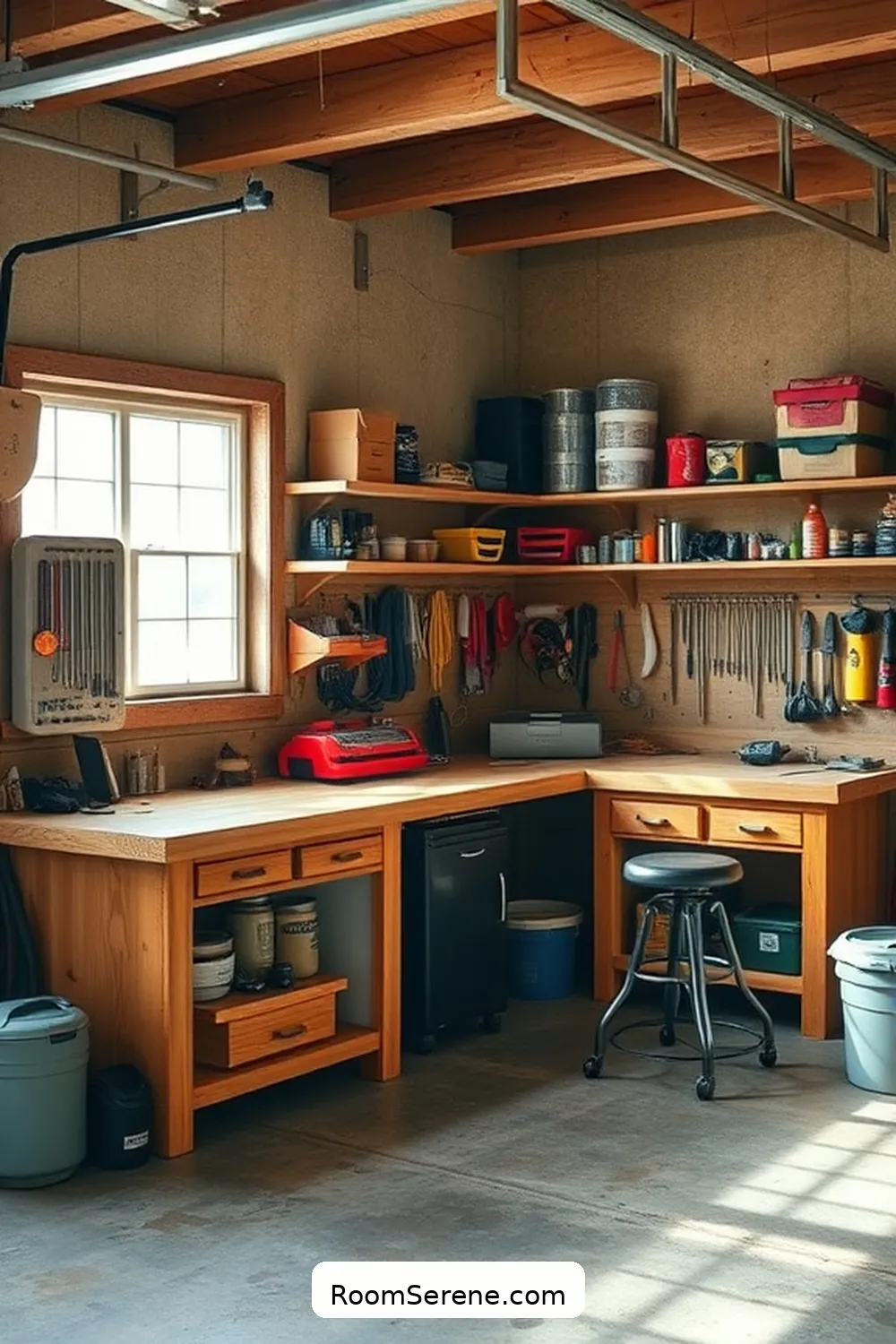
While designing my garage workspace, I focus on building workbenches and shelves that not only maximize functionality but also reflect my commitment to sustainability.
Using recycled wood allows me to create unique pieces while minimizing waste. Here’s what I prioritize:
- Sturdy Materials: I select wood with a solid structure for durability.
- Modular Designs: I create adjustable shelves that can grow with my needs.
- Eco-Friendly Finishes: I use non-toxic stains or oils to protect the wood.
- Space Optimization: I incorporate under-bench storage to keep my workspace tidy.
- Aesthetic Appeal: I embrace the wood’s natural imperfections for character.
Installing Storage Solutions
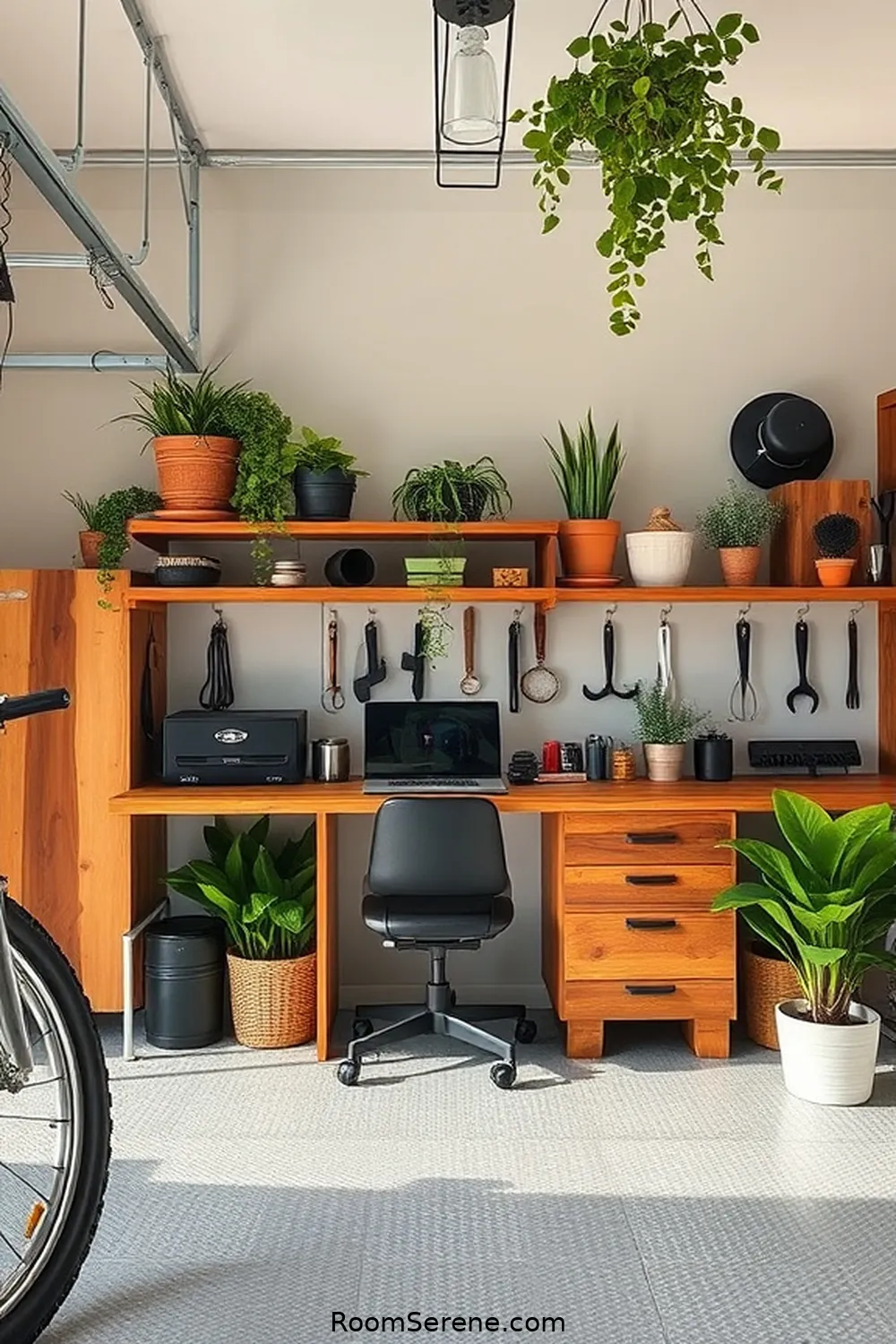
Since I want my garage workspace to be as efficient as possible, installing clever storage solutions is essential. I’ve found that using recycled wood to create vertical storage can maximize my space.
I started by crafting wall-mounted shelves and pegboards, which help keep tools accessible and off the workbench. For smaller items, I repurposed wooden crates, painting them in vibrant colors to add personality while being functional.
I also installed a sliding barn door made from reclaimed wood, which not only saves space but also serves as a rustic aesthetic feature. By thinking creatively and using what I already have, I transformed my garage into a resourceful haven that’s both eco-friendly and organized.
Adding Finishing Touches

As I put the final touches on my garage workspace, I realized how important it’s to create an environment that reflects my values and creativity.
I wanted to guarantee my space felt inviting and sustainable, so I focused on a few key elements:
- Upcycled Decor: I crafted unique pieces from leftover wood scraps.
- Natural Lighting: I maximized sunlight with strategically placed mirrors.
- Plants: I added low-maintenance greenery for a touch of nature.
- Color Palette: I used non-toxic paints in earthy tones to inspire calmness.
- Personalized Touches: I hung up artwork and photos that motivate me.
These finishing touches not only enhance the aesthetics but also embody my commitment to being eco-conscious and innovative in my workspace.
Organizing Your Tools
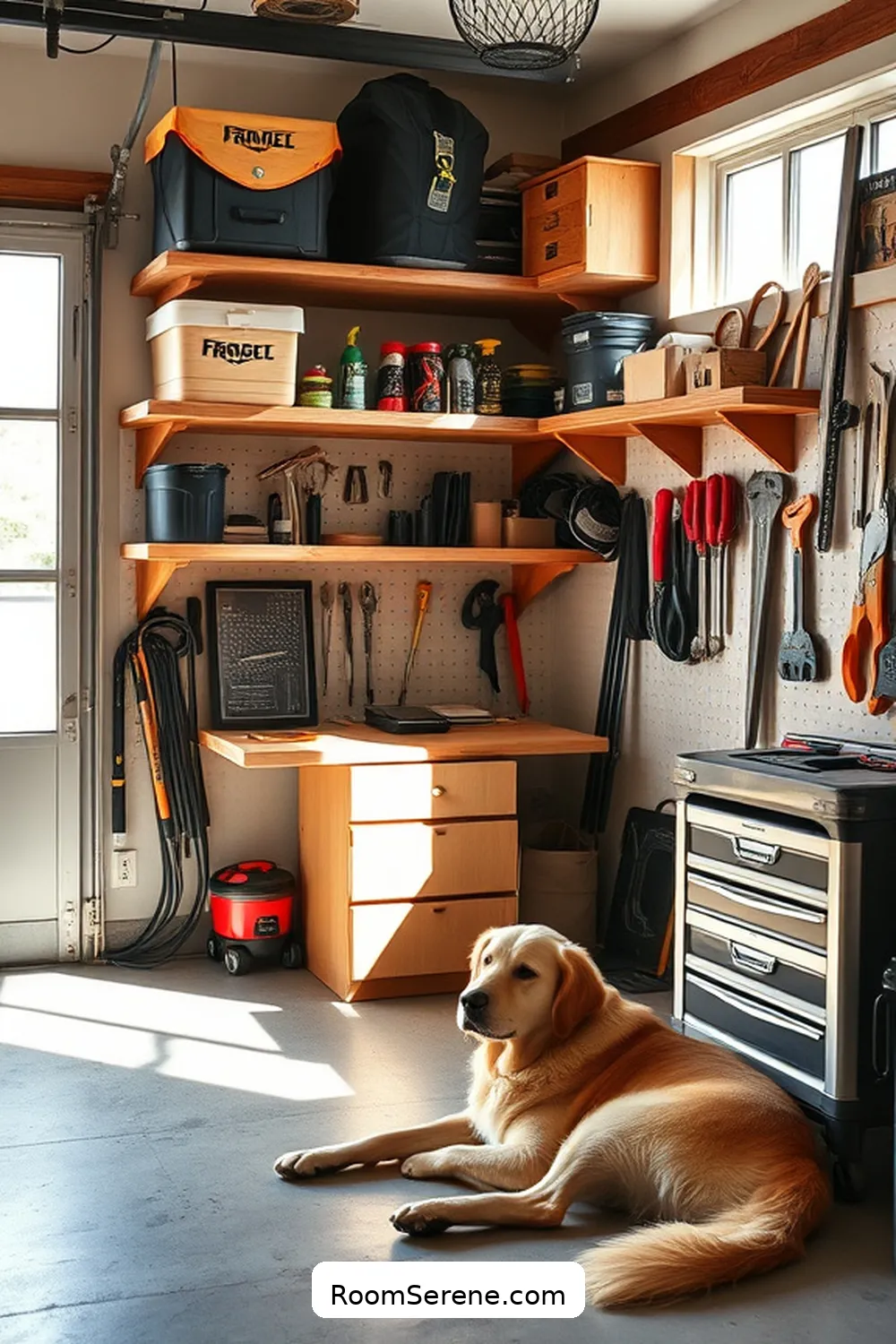
Organizing your tools is essential for creating an efficient and inspiring garage workspace. I’ve found that using reclaimed wood for storage solutions not only maximizes space but also adds character.
Start by sorting your tools into categories—hand tools, power tools, and gardening supplies. For hand tools, I love building simple wall-mounted racks from repurposed wood, keeping everything visible and accessible.
Sort your tools into categories and create wall-mounted racks from reclaimed wood for a functional, organized workspace.
For power tools, I’ve created a sturdy workbench with built-in drawers made from salvaged wood. It’s a great way to keep everything organized and out of sight.
Don’t forget hooks and pegboards; they’re fantastic for utilizing vertical space. By being resourceful and eco-conscious, you can maintain a tidy workspace that fuels your creativity and productivity.
Creating a Comfortable Work Environment
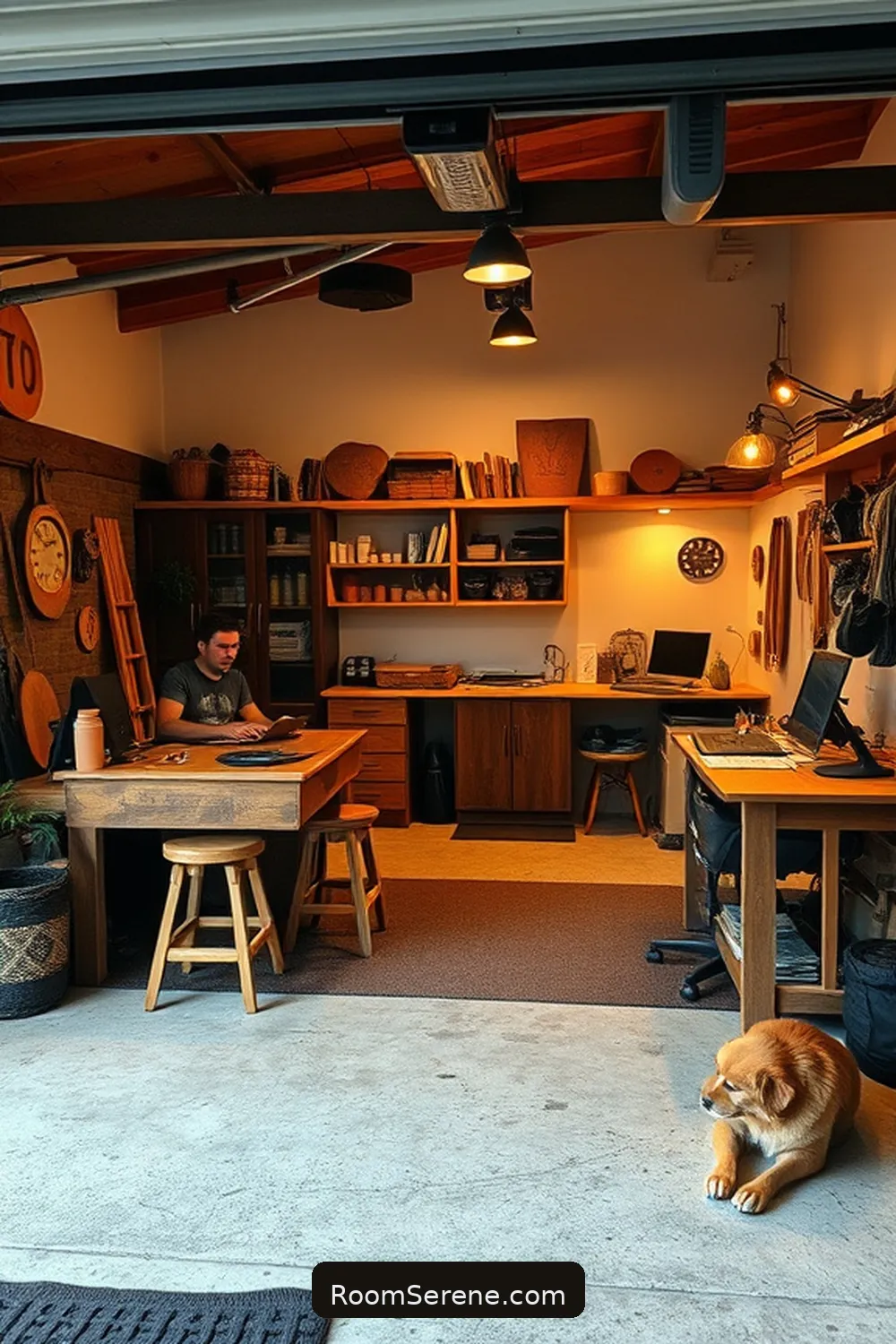
Creating a comfortable work environment is essential for fostering creativity and productivity. I’ve found that small adjustments can make a big difference, especially when using recycled materials.
Here are some tips I’ve implemented:
- Natural lighting: Position your workspace near windows to maximize sunlight and reduce energy use.
- Ergonomic furniture: Use reclaimed wood for a sturdy, comfortable workbench that supports good posture.
- Plants: Incorporate greenery to purify the air and enhance your mood.
- Sound control: Use recycled insulation to minimize noise, creating a peaceful atmosphere.
- Personal touches: Add items that inspire you, like artwork made from repurposed materials.
With these elements, I’ve transformed my garage into a cozy, eco-friendly haven that sparks my creativity.
Maintaining Your Workspace Over Time
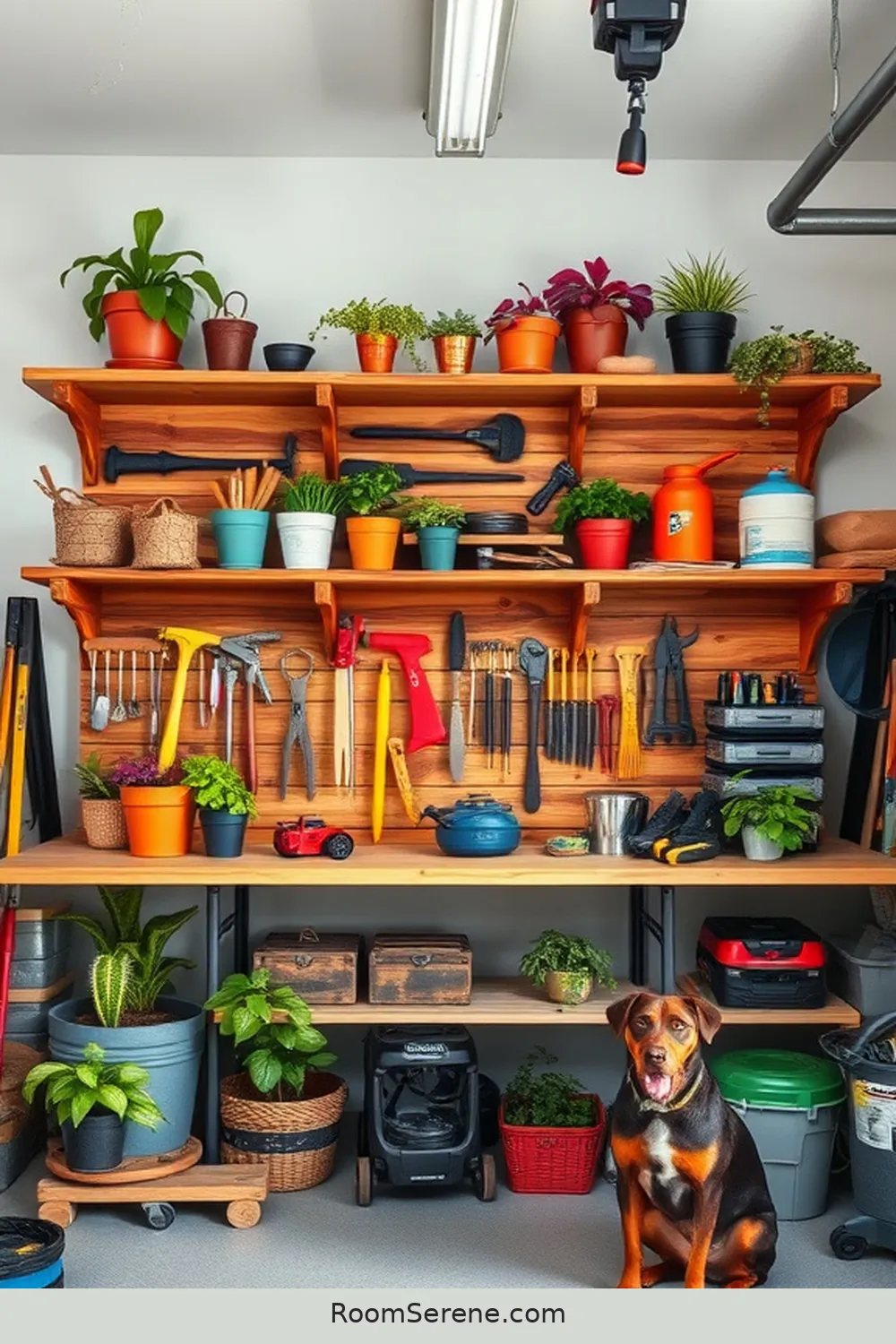
After setting up a comfortable workspace, keeping it functional and inviting over time is key to sustaining creativity.
I make it a habit to regularly declutter my garage, recycling or repurposing anything I no longer need. This not only keeps my space tidy but also aligns with my eco-conscious values.
Regularly decluttering my garage helps maintain a tidy space while honoring my commitment to sustainability.
I also inspect my recycled wood furniture for wear and tear, applying natural oils to maintain their beauty and durability.
Incorporating plants into my workspace adds a revitalizing touch and improves air quality.
I switch up my layout occasionally to spark new ideas and keep the environment dynamic.

